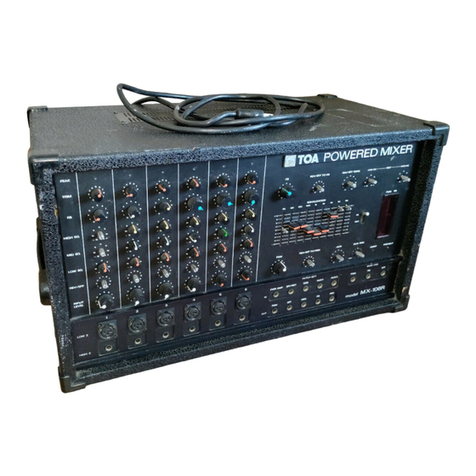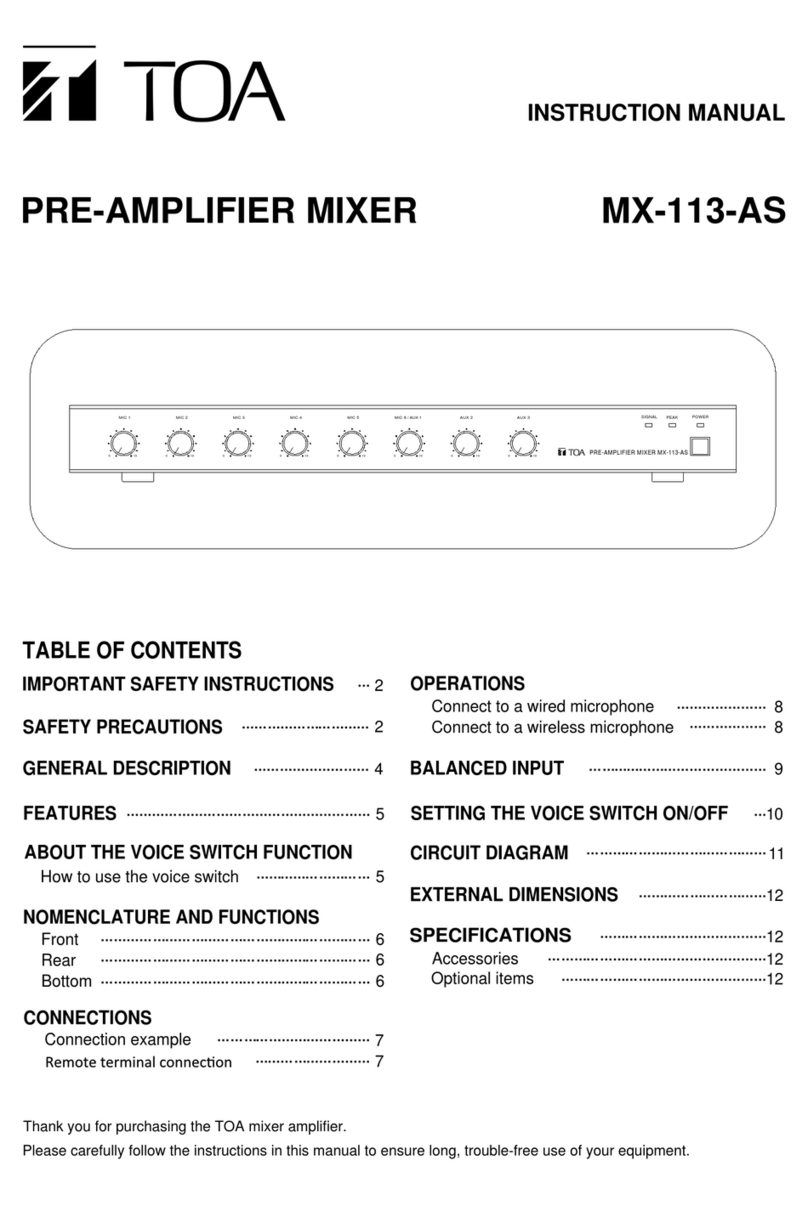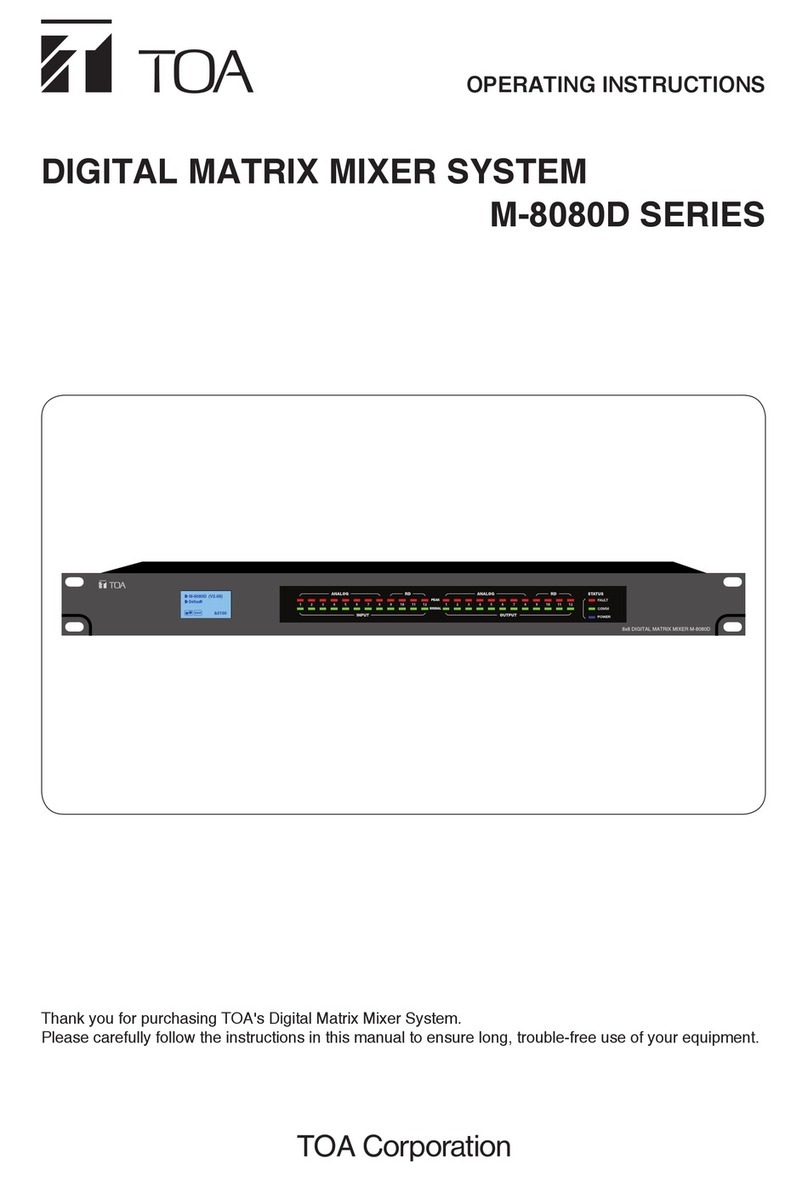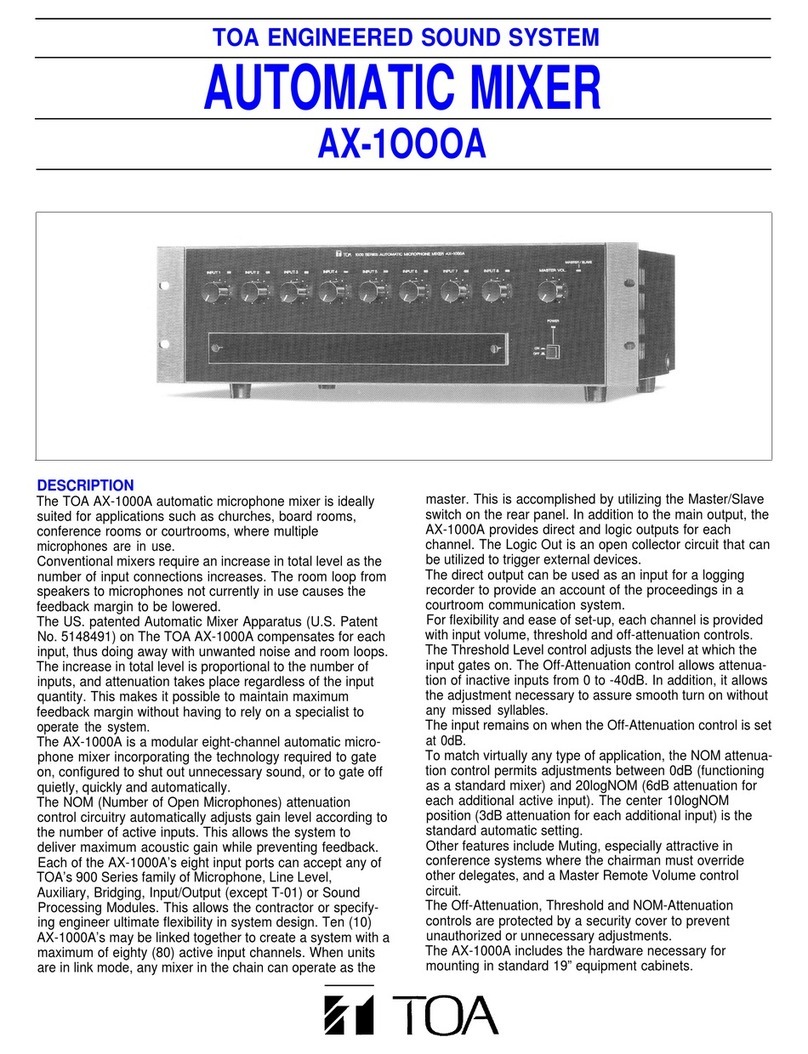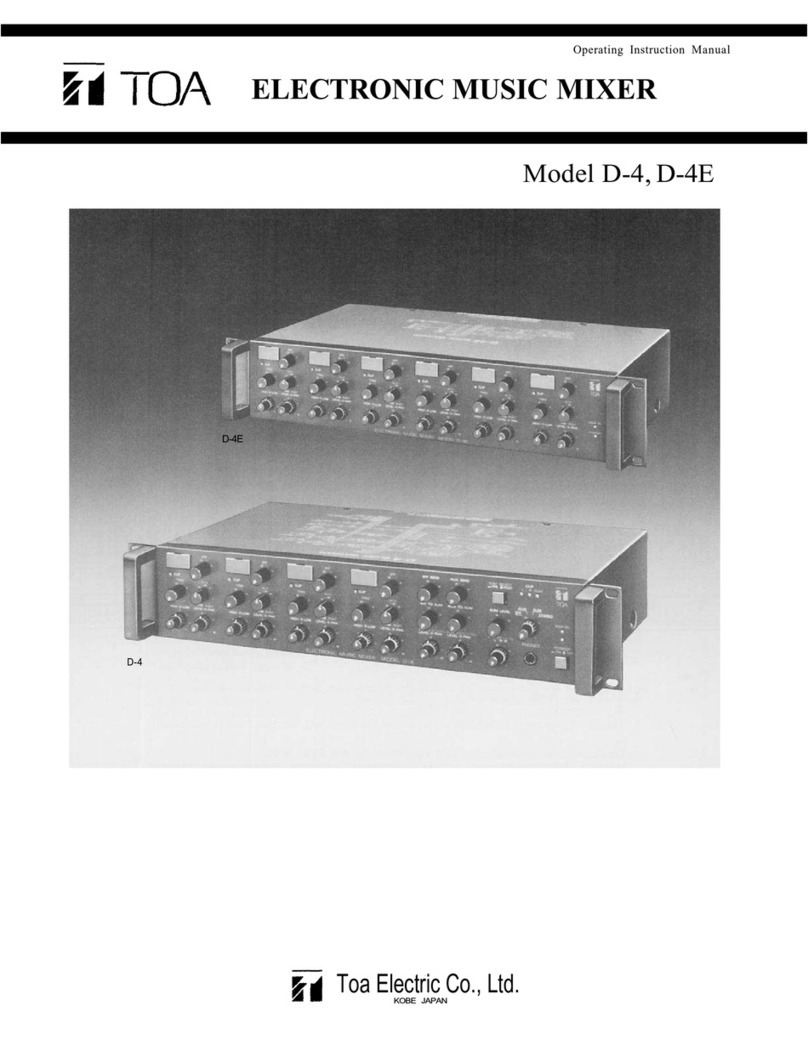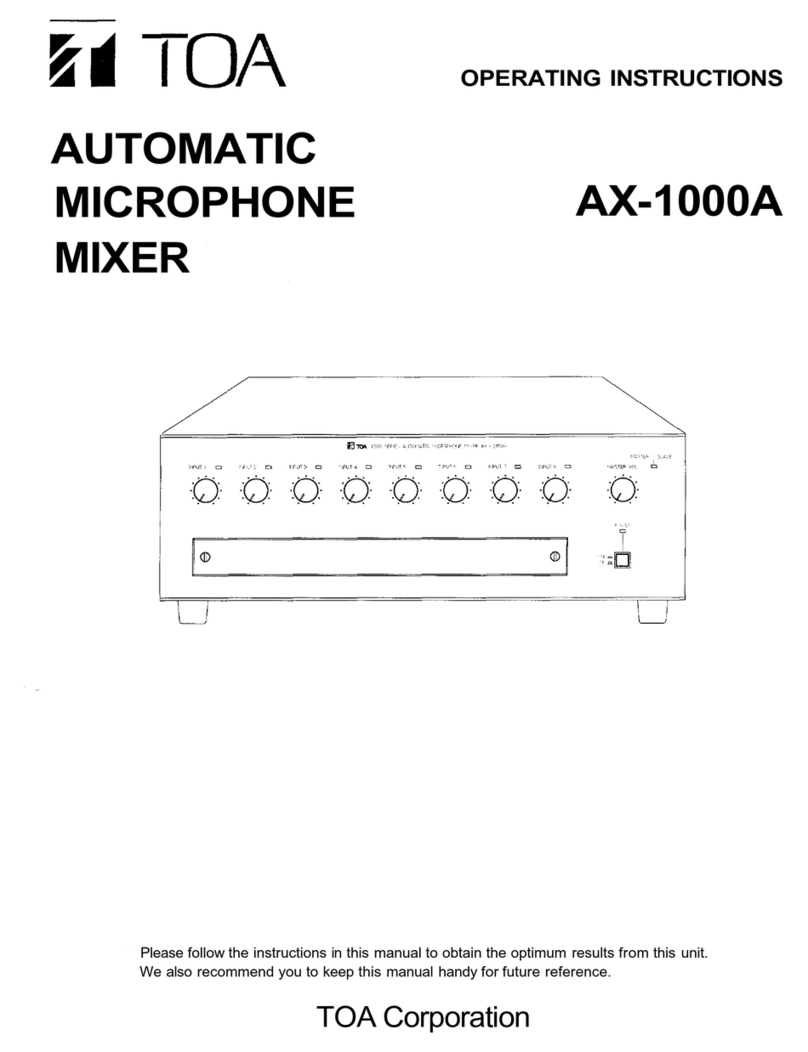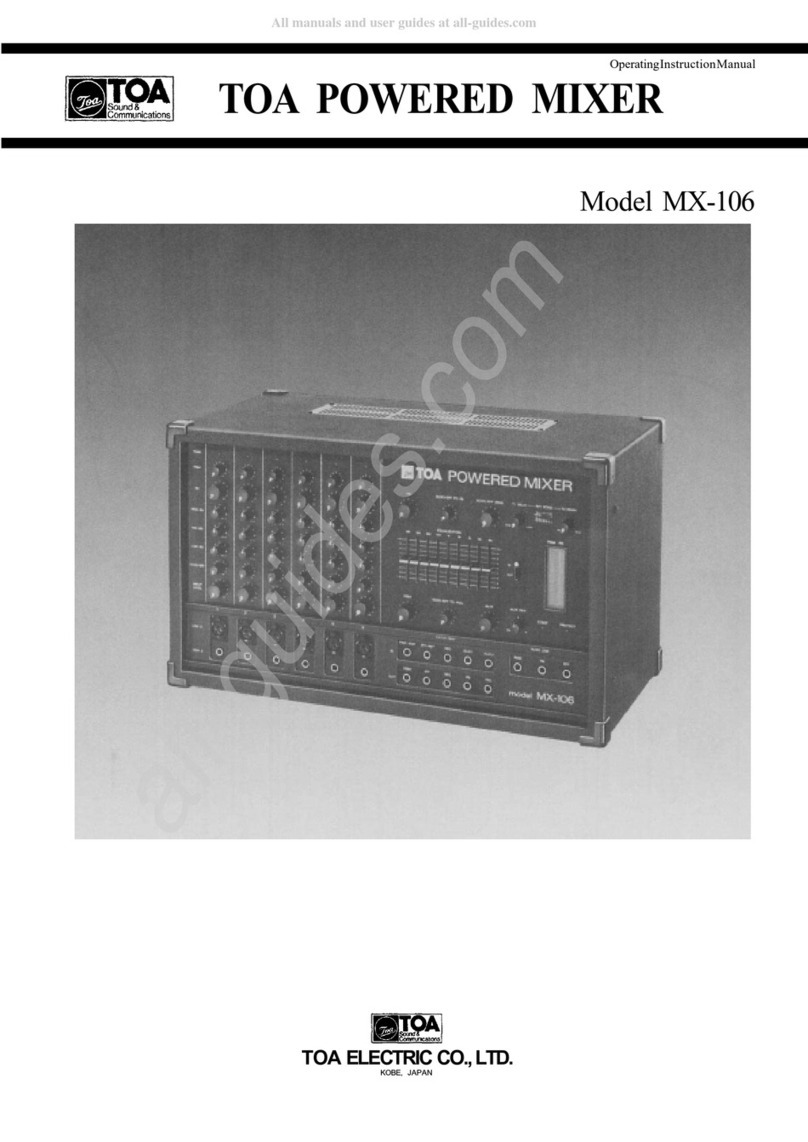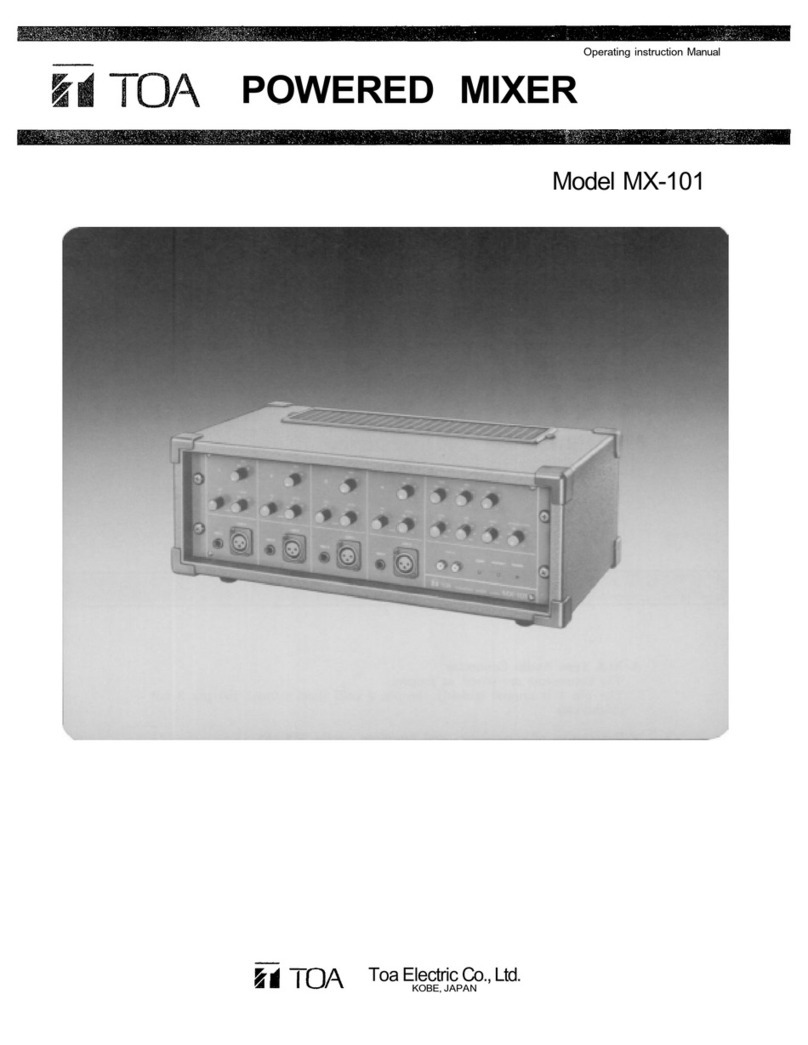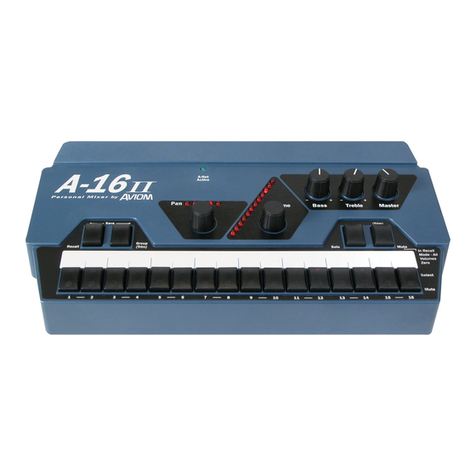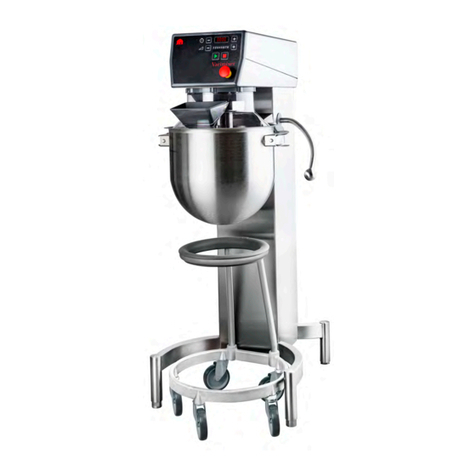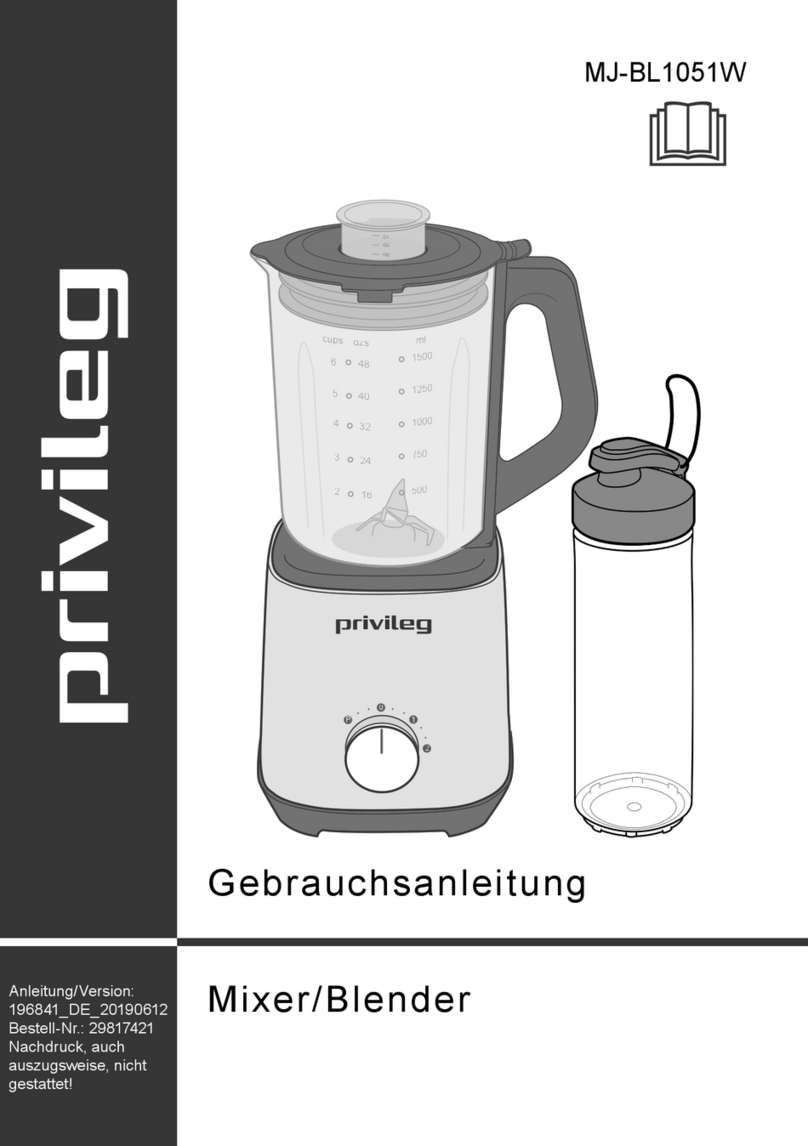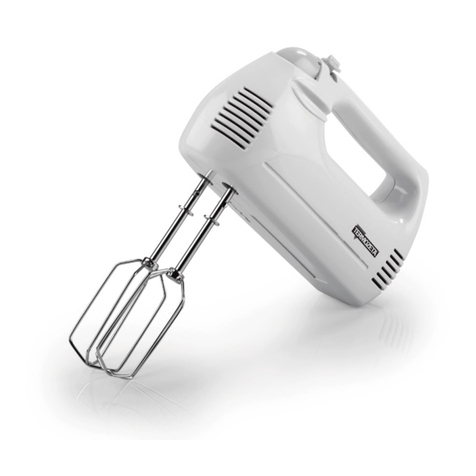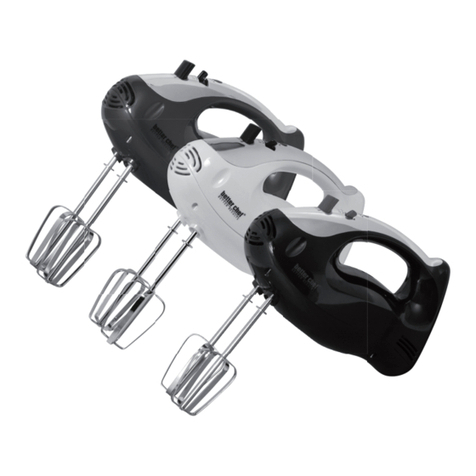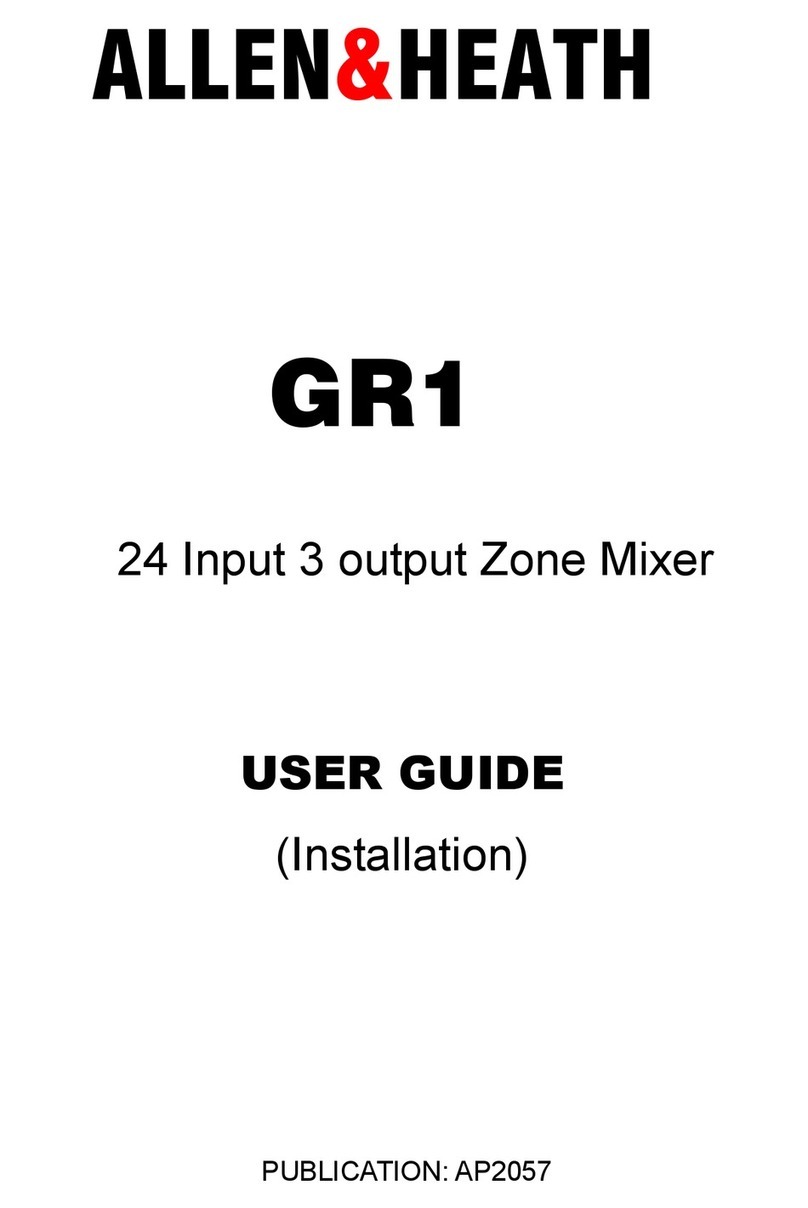
Pe k Indic tor (PEAK)
The peak indicator lights when
the pre or post EQ signal level
reaches 3dB below clipping,
giving a visual reference for
optimum setting of the trim
control.
Foldb ck Control (FB)
The Foldback control deter-
mines the level of signal
assigned to the foldback mix-
ing buss, thus setting the level
of that channel in the on-stage
monitor mix.
Reverb/Effects Control
(REV/EFF)
This control determines the
level of signal assigned to the
reverb effects buss. Rotating
the control clockwise increases
the amount of reverb effect in
that channel.
High Equ lizer Control (High)
The high EQ control provides
±15dB of continuously variable
shelving equalization at 20
kHz. and has a flat audio re-
sponse when set to the "0" de-
tented position.
High-Mid Equ lizer Control
(HIGH MID)
The high-mid EQ control pro-
vides ±13dB of continuously
variable peaking equalization
at 3kHz. and has a flat audio
response when set to the "0"
detented position.
Low-Mid Equ lizer Control
(LOW
MID)
The low-mid EQ control pro-
vides ±13dB of continuously
variable peaking equalization
at 300Hz. and has a flat audio
response when set to the "0"
detented position.
LOW Equ lizer Control
(LOW)
The low EQ control provides
±15dB of continuously variable
shelving equalization at 30Hz.
and has a flat audio response
when set to the "0" detented
position.
Input Level Control
(LEVEL)
The level control provides con-
tinuously variable adjustment of
the channel output to the prog-
ram mixing buss, thus deter-
mining the level of that channel
in the main sound system mix.
Since the reverb/effects signal
is "post" this control, an in-
crease in the level of the chan-
nel's output will also result in a
corresponding increase in the
reverb effect of that channel.
The nominal level of the input
level control is at the "0" posi-
tion.
Low Imped nce Connectors
(LOW
Z)
The XLR connectors are low
impedance, electronically ba-
lanced inputs with an input im-
pedance of 1k ohms.
Input Trim Control (TRIM)
The input trim adjusts the gain
of the head-amp stage of the
associated channel, providing
39dB of gain control. When the
trim control is set to the "0"
position, the nominal input
levels of the low-Z and high-Z
inputs are -55dB and -35dB
respectively. At the "-30" posi-
tion the levels are -16dB and
+4dB. The trim of each chan-
nel should be adjusted so that
the peak LED just begins to
light, or only flashes occa-
sionally. This will ensure lowest
distortion levels and optimum
signal to noise ratio.
Foldb ck M ster Control (FB)
The FB master control adjusts
the overall combined signal
level of the six independent
channel foldback sends, and
thus the level of the entire on-
stage monitor mix.
Reverb/effects to Foldb ck
Control (REV/EFF TO FB)
This control adjusts the amount
of reverb/effects signal that is
returned to the foldback buss
and thus the level of reverb/
effects contained in the on-
stage monitor mix.
Reverb/Effects Send Control
(REV/EFF SEND)
This control adjusts the overall
signal level of the effects mix
that is delivered to the internal
reverberation unit, or to an exter-
nal effects device through the
effects output. The send control
works in conjunction with the
REV/EFF to PGM and the REV/
EFF to FB controls to set the
overall level of reverb/effects in
the main and monitor sound
systems.
Reverber tion High Equ lizer
Control (HIGH EQ)
The high EQ control alters the
high frequency response of the
reverberation signal. The "0" de-
tented position provides flat au-
dio response.
Reverber tion Low Equ lizer
Control (LOW EQ)
The low EQ control alters the
low frequency response of the
reverberation signal. The "0" de-
tented position provides flat au-
dio response.
Equ liz tion LED Indic tor
(EQUALIZATION)
The LED indicator lights when
the equalization switch is set to
"IN" position.
Gr phic Equ lizer In/Out
Switch (IN/OUT)
The in/out switch enables com-
parison between a flat response
(out) and the equalized re-
sponse (in). The "out" position
completely removes the equaliz-
er from the MX-601 circuitry.
LED B rgr ph Pe k Meters
(PGM/FB)
The high intensity meters enable
visual monitoring of the program
and foldback output signal
levels
Power LED Indic tor
(POWER)
The LED indicator lights when
the power switch is set to "ON"
position.
Power Amp Protection
Indic tor (PROJECT)
The indicator LED lights if the
power amplifier output is
shorted, if the temperature of the
unit rises above acceptable
levels, or if DC is drifted to the
speaker outputs. If the LED
should light, speaker wiring and
ambient temperature of the MX-
601 should be checked. If the
LED remains lighted, the unit
should be referred to qualified
service personnel for repair.
Note:
The MX-601 protection circuitry
will (1) detect faulty conditions
within the power amplifier, (2)
give a visual indication, and (3)
automatically shut down until the
fault condition is alleviated. This
special circuitry ensures max-
imum reliability and virtually eli-
minates equipment damage due
to unsafe or fault conditions.
Please refer to fault protection
table on page 7 for full explana-
tion of this important feature.
Gr phic Equ lizer
(EQUALIZATION)
The graphic equalizer is 1/1
octave with 10 independent
active bands (filters), providing
12dB of boost or cut at each
center frequency. The "0" de-
tented position provides flat
audio response.
High Imped nce Connectors
(HIGH Z)
These connectors are unba-
lanced, standard 1/4" phone
jacks with an input impedance
of 50k ohms, and an input level
of -35dB when the trim control
is set to "0". When a plug is in-
serted into the high-Zinput, the
corresponding XLR connector
is automatically switched out of
the input circuitry.
Progr m M ster Control
(PGM)
The PGM control adjusts the
overall combined signal level
of the six independent channel
level controls, and thus the
level of the main sound sys-
tem.
Reverb/Effects to Progr m
Control
(REV/EFF TO PGM)
This control adjusts the amount
of reverb/effects signal that is
returned to the program buss
and thus the level of reverb/
effects contained in the main
sound system.
Aux/T pe Level Control
(AUX/TAPE)
This control sets the overall
level of the AUX/TAPE input
signal
Buss Link J ck
(BUSS LINK)
P tching J ck
(PATCH BAY/OUT)
P tching J ck
(PATCH BAY/IN)
Aux/T pe P npot
(AUX/TAPE PAN)
This control assigns the auxili-
ary and tape input signal (a
tapedeck, etc., connected to
the aux input jacks) to either
the program or the foldback
mixing busses. At the center
position, the signal is routed
equally to both busses. Pan-
ning from one side to the other
gradually assigns the signal to
either independently.
Power Amp Compression
Indic tor (COMP)
The Comp LED lights when the
internal compressor is acti-
vated The compressor is pro-
vided to protect speaker sys-
tems by compressing the input
signal level of the power ampli-
fier when clipping occurs in the
output stage. Frequent flashing
of the LED is not reason for
alarm. However, a constant or
steady light indicates that the
MX-601 is being overdriven
and that the internal power
amplifier is possibly "under
powered" for that application.
The output level of the MX-601
should be decreased until the
LED only flashes intermittently.
Front P nel

